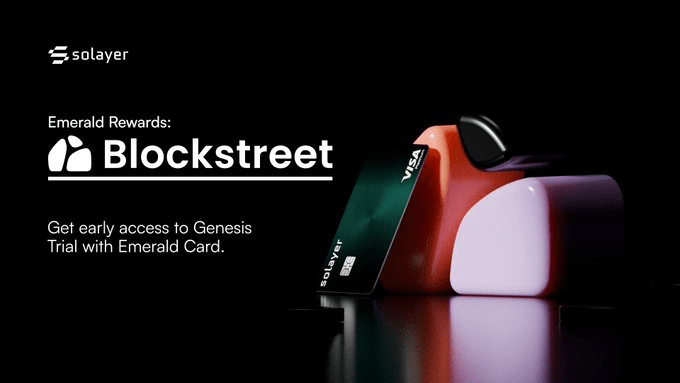With the rapid development of the Web3 ecosystem, decentralized finance (DeFi) and multi-chain protocols are becoming important cornerstones of the blockchain industry. As an emerging multi-chain DeFi protocol, Solayer provides users with efficient and secure asset management and liquidity solutions through a high-performance trading engine, cross-chain compatibility, and decentralized governance. This article will conduct a comprehensive analysis of Solayer from the perspectives of project positioning, technical architecture, protocol mechanisms, economic model, ecological applications, risk control, and long-term strategy.
Solayer's core positioning is to provide underlying protocol support for multi-chain asset management and DeFi applications, enabling users to achieve free flow of assets and efficient trading across different blockchain environments. The protocol offers open interfaces, cross-chain bridging, and standardized tools to provide developers with a unified access solution while reducing user operational complexity. With the rapid growth of NFT, GameFi, and DeFi applications, user demand for cross-chain asset management and high-performance protocols is continuously increasing, and Solayer emerges in this context.
In terms of technical architecture, Solayer adopts a modular design that combines on-chain smart contracts and off-chain computation optimization to achieve high throughput and low latency transactions. The protocol supports cross-chain asset bridging, ensuring the free flow of assets across different chains, while guaranteeing transaction security through encrypted transmission and multi-verification mechanisms. The trading engine features automated matching and liquidity aggregation capabilities, enabling optimal price trading and a low slippage trading experience. The protocol provides developer SDK and API support, allowing DApps to quickly integrate and implement customized trading logic and asset management functions.
In terms of protocol mechanisms, Solayer has designed various trading models, including limit trading, auction trading, and liquidity mining. Users can earn fee sharing and token rewards by providing liquidity, forming an incentive closed loop within the ecosystem. The protocol combines on-chain and off-chain verification to ensure transaction accuracy and asset security. Decentralized identity verification and session management mechanisms further enhance the security of user assets and reduce the risk of attacks.
Solayer's economic model balances ecological incentives and value stability. Tokens are used for fee payments, liquidity rewards, governance voting, and ecological fund support, forming a long-term value cycle. Token holders can participate in protocol governance, including parameter adjustments, ecological fund allocation, and decisions on new feature launches. The economic model design ensures both the stability of token value and encourages active participation from users and developers in ecosystem building, forming a healthy and sustainable growth mechanism.
In terms of ecological applications, Solayer covers not only conventional DeFi trading and liquidity provision but also supports NFT asset trading, GameFi game asset management, and cross-chain payment scenarios. Through cross-chain capabilities, users can freely transfer assets across different blockchains, improving capital utilization efficiency. The protocol provides a full set of developer tools and documentation, enabling DApps to quickly integrate with Solayer, lowering the technical threshold, encouraging ecological innovation and cooperation, and forming a complete ecological closed loop.
Risk control is the core guarantee of Solayer's security and stable operation. The protocol reduces technical and asset risks through smart contract audits, cross-chain bridge security mechanisms, transaction verification, and multi-layer permission management. It also pays attention to market fluctuations, regulatory policies, and security threats, optimizing strategies in a timely manner to ensure stable ecological development. A complete risk management system not only guarantees the safety of user assets but also enhances the protocol's credibility and attractiveness.
In the face of competition from other multi-chain DeFi protocols, Solayer's differentiated advantages are evident, including cross-chain interoperability, high-performance trading engine, innovative trading models, and comprehensive ecological development. The protocol's leading advantages in multi-chain asset management, user experience, and developer support place it in a core position within the decentralized finance ecosystem, possessing strategic value.
From a long-term strategic perspective, Solayer is committed to

To build a secure, efficient, and scalable multi-chain DeFi ecosystem, providing infrastructure for Web3 asset management and trading. The protocol enhances the convenience of user asset operations through standardized interfaces and cross-chain capabilities, providing developers with unified access standards, promoting ecological expansion and network effects. With the rapid development of cross-chain applications and multi-chain DeFi, Solayer's ecological value and strategic position will continue to improve, possessing long-term development potential and strategic advantages.
@Solayer #BuiltonSolayer $LAYER
